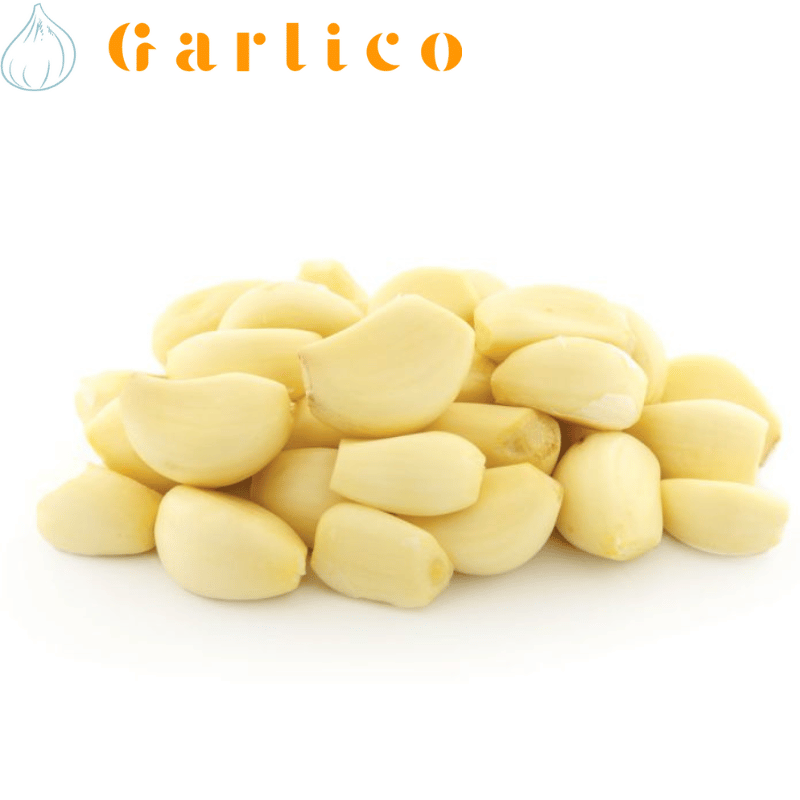
Introduction
Garlic has been a beloved ingredient in many dishes for centuries. It adds a distinct flavor and aroma to any meal, and it also has several health benefits. However, there is a type of garlic that is often overlooked – elephant garlic. Despite its name, elephant garlic is not a type of garlic at all. It is actually a type of leek, but it has a milder flavor and a larger bulb than traditional garlic. In this article, we will explore the unique qualities of elephant garlic and how it can be used to add flavor to your meals.
What is Elephant Garlic?
Elephant garlic, also known as Allium ampeloprasum, is a plant species that is closely related to the onion and leek. It is native to the Mediterranean region but can now be found in many parts of the world. The plant can grow up to six feet tall and has a large, bulbous head that can weigh up to a pound. Unlike traditional garlic, elephant garlic has a milder flavor and a slightly sweet taste.
Nutritional Benefits of Elephant Garlic
Elephant garlic is not only a tasty addition to meals, but it also has several health benefits. It is a good source of vitamin C, which is important for a healthy immune system, and it also contains antioxidants that can help protect the body from damage caused by free radicals. Additionally, elephant garlic contains allicin, a compound that has antibacterial and antifungal properties.
Culinary Uses for Elephant Garlic
Elephant garlic can be used in many of the same ways as traditional garlic. It can be chopped and added to soups, stews, and sauces, or roasted and spread on bread. However, because of its mild flavor, elephant garlic can also be used in dishes where traditional garlic might be too overpowering. For example, it can be used in salads or as a topping for pizza.
Roasting Elephant Garlic
One of the most popular ways to prepare elephant garlic is by roasting it. Roasting brings out the natural sweetness of the garlic and makes it tender and creamy. To roast elephant garlic, simply cut off the top of the bulb to expose the cloves, drizzle it with olive oil, and wrap it in aluminum foil. Roast in the oven at 400°F for 30-40 minutes, or until the garlic is soft and golden brown.
Elephant Garlic Butter
Another delicious way to use elephant garlic is to make garlic butter. To make garlic butter, simply combine softened butter with roasted elephant garlic and season with salt and pepper. Garlic butter can be used to flavor vegetables, meats, and bread.
Elephant Garlic Soup
Elephant garlic can also be used to make a flavorful and comforting soup. To make elephant garlic soup, sauté chopped elephant garlic and onions in olive oil until they are tender. Add chicken or vegetable broth and simmer until the flavors have melded together. Finish the soup with a dollop of sour cream and a sprinkle of fresh herbs.
Elephant Garlic Pesto
Pesto is a versatile sauce that can be used in many different dishes. Traditional pesto is made with basil, pine nuts, and garlic, but elephant garlic can be used instead for a milder flavor. To make elephant garlic pesto, blend roasted elephant garlic, basil, Parmesan cheese, pine nuts, and olive oil in a food processor until smooth. Elephant garlic pesto can be used as a topping for pasta, as a spread for sandwiches, or as a dip for vegetables.
Appearance: Elephant garlic has a larger bulb than regular garlic, and its individual cloves are bigger as well. Its cloves are also covered with a thick, papery skin, which is easier to peel than the thin skin of regular garlic. Regular garlic has a more pungent aroma and a sharper taste, while elephant garlic has a milder flavor and a slightly sweet taste.
Uses: Both elephant garlic and regular garlic can be used in many dishes, but they have different flavor profiles. Regular garlic has a more assertive flavor and is commonly used in savory dishes like pasta sauces, stews, and soups. Elephant garlic, on the other hand, has a milder flavor and is a good choice for dishes where the garlic flavor needs to be more subtle, such as salads and roasted vegetables. Additionally, elephant garlic can be used as a substitute for onions or leeks in recipes.
Nutritional Benefits: Both types of garlic have several health benefits. They contain antioxidants that can help protect the body from damage caused by free radicals, and they also have antibacterial and antifungal properties. However, elephant garlic has a higher concentration of allicin, the compound responsible for many of garlic’s health benefits, compared to regular garlic. Elephant garlic is also a good source of vitamin C, which is important for a healthy immune system.
Final Thoughts: While both elephant garlic and regular garlic have their own unique flavor and appearance, they can be used interchangeably in many dishes. Elephant garlic’s milder flavor makes it a good choice for dishes where garlic needs to be more subtle, while regular garlic’s pungent flavor is ideal for savory dishes. Both types of garlic also have numerous health benefits, so incorporating them into your diet can be a great way to add flavor and nutrition to your meals.
Conclusion
Elephant garlic may not be as well-known as traditional garlic, but it is a flavorful and versatile ingredient that can be used in many dishes. Its mild flavor and slightly sweet taste make it a great addition to salads, soups, and sauces, and it can also be roasted and used as a spread on bread. Additionally, elephant garlic has several health benefits, including being a good source of vitamin C and containing antioxidants and antibacterial compounds. So next time you’re looking to add some flavor to your meal, consider giving elephant garlic a try.





